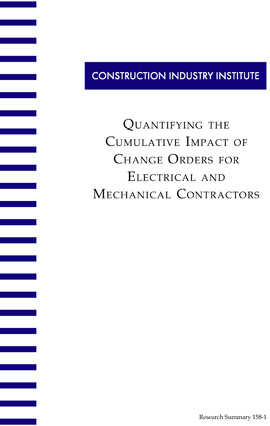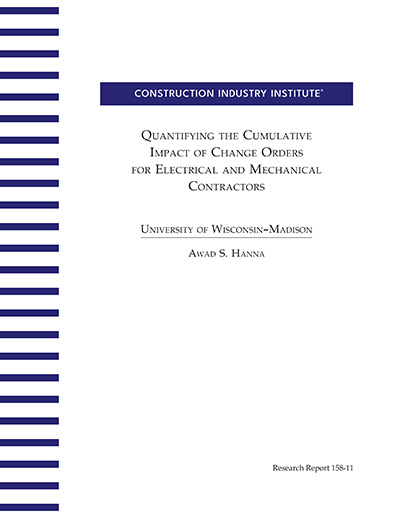
Quantifying the Cumulative Impact of Change Orders for Electrical and Mechanical Contractors
Change is inevitable on construction projects, primarily because of the uniqueness of each project and the limited resources of time and money that can be spent on planning, executing, and delivering the project. Change clauses, which authorize the owner to alter work performed by the contractor, are included in most construction contracts and provide a mechanism for equitable adjustment to the contract price and duration. Even so, owners and contractors do not always agree on the adjusted contract price or the time it will take to incorporate the change. What is needed is a method to quantify the impact that the adjustments required by the change will have on the changed and unchanged work.
Owners and our legal system recognize that contractors have a right to an adjustment in contract price for owner changes, including the cost associated with materials, labor, lost profit, and increased overhead due to changes. However, the actions of a contractor can impact a project just as easily as those of an owner. A more complex issue is that of determining the cumulative impact that single or multiple change orders may have over the life of a project.
The Construction Industry Institute (CII) took on this issue by forming the Cumulative Change Order Impacts Research Team. The research team was tasked with investigating the cumulative impact of change orders on electrical and mechanical efficiency.
This research resulted in the development of two models, one to identify if a construction project has been impacted as a result of cumulative change, and the other to predict the probable magnitude of the cumulative impact due to that change. A summary of the research follows, including recommendations for both owners and contractors on the approaches each party could take that would increase the effectiveness of the overall project while focusing on the common goal of project success.
RT-158 identified six variables that can be used to quantify labor inefficiency (RS158-1, pp. 15-16):
- Percent Change
- % PM Time on Project
- % of Changes Initiated by the Owner
- Productivity Tracking
- Overmanning
- Processing Time
- The most common reasons for change orders are Additions, Design Changes, and Design Errors. Therefore you should do more up-front engineering.
- Reduce change order processing time to decrease the likelihood of impact.
- Require contractors to submit a manpower loading curve with proposal.
- Integrate any changes into the work flow as efficiently as possible.
- Use project software to track productivity:
- % complete by earned value
- % complete by actual earned work-hours
- % complete by actual installed quantities
- Resource loading relationships (ratios):
- Actual peak over actual average manpower
- Estimated peak over actual peak manpower
- Actual manpower loading curve versus estimated manpower loading curve



